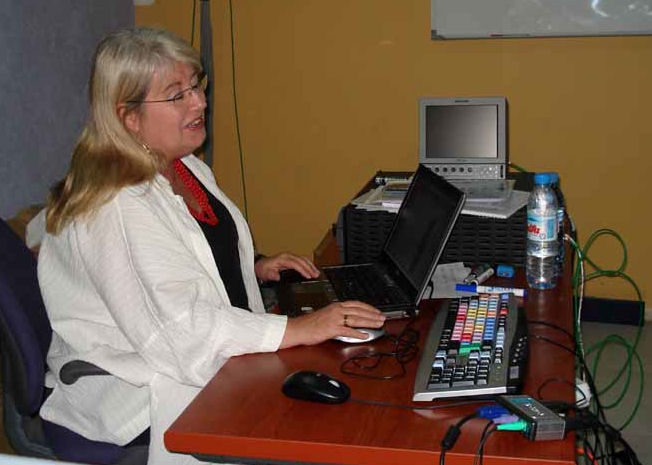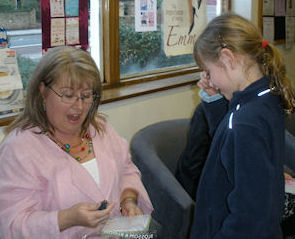
This week I had the pleasure of travelling to Southampton to talk to the local RNA chapter about working with the media.
I had a lovely time – thank you ladies and gentlemen. Many of you were kind enough to say that workshop had been very helpful.
If you want to check out my media tips – they are in a previous blog – here
On the train back from Southampton, I starting thinking about workshops and what makes a good workshop – good for both the teacher and the audience.
I have taught, in one way or another, most of my adult life – kids at pony club, or fellow writers, university students and IT support teams (in my day job). As authors, we are often asked to speak in front of groups – and that can be difficult because authors do tend to be solitary souls.
So here are my top ten tips for making a good workshop or lecture..
1) Pay attention to the audience…
When we are standing on front of an audience, we expect them to pay attention to us. But first we need to pay attention to them. Whenever I agree to a workshop, I always find out a bit about who will be in the audience. Every group is different and the make-up of the audience will determine both the content and how I present it. The subject may be the same – but the style and presentation of a workshop will vary if the group is college students vs first time writers or experienced writers. Modify your material for the audience.
It’s all about respect – respect your audience and they will respect you. Present yourself and your material in a way which is appropriate.
2) Timing is everything.
Well – not everything – but it’s pretty important so make sure you are wearing a watch or can see a clock. I usually take my watch off and put it on the desk/podium in front of me, so I am not obviously checking the time.
Always find out how long the session is to be – and plan your material accordingly. This is an example of how I do that…. The session is to be, for example, one hour.
Deduct five minutes at the beginning for everyone to get settled and for introductions.
Deduct 5 minutes at the end for final points or questions – summation, goodbye and (hopefully) thank you and applause.
This leave 50s minutes for content.
I usually allow five minutes per point/topic or for a substantial exercise – thus – ten topics. (Yes – you got it – these ten top tips may yet morph into workshop on workshops.)
I have sheet in front of me with a list of the topics I am going to cover – and the time each one should start –in very large letters! I keep track of how I am going and drop or add material accordingly. And yes – I always have one spare topic as standby in case I need to fill extra time.
3) Exercise is good for you.
Exercises are always a great way to learn. For each of your points, prepare an exercise (or two). Exercises should reinforce the point you have just made. To make them worthwhile, you need to make sure you give your people enough time for them to do it. Sometimes I mark off a whole five minute section as an exercise. If you intend to do a lot of exercises – make sure the people coming know in advance and come prepared with notebook and pen. You should also bring some paper and pens to hand out – just in case anyone forgets.
Depending on the exercise, I like to have someone read out what they have written to the class – for discussion. But never, never force anyone to do anything in front of the audience if they don’t want to and never embarrass anyone in front of the others.
Exercises are your timing wriggle room – you can add or remove them to keep yourself on time.

4) Silence is golden
Don’t be afraid of silence. The brain needs some down time to process new information and a few seconds of silence can be a great breather. Don’t be afraid of silence during exercises. They often need to be done in silence to give people a chance to think.
If you are doing a long workshop, think about putting a break in the middle. I never do more than two hours (and hour and a half is better) without a short break. It’s not just for the bathroom trips. It gives the brain that down time to process the information. But be tough about people coming back on time!
5) Don’t be afraid to not know.
Don’t be afraid to admit you don’t know something. When I’m doing my IT sessions, someone will occasionally ask ‘what happens if I do ….” I never lie. If I don’t know, I say I don’t know. My admission is usually followed by “Let’s find out” and we proceed do it (and have crashed some very expensive computer systems in the process). Often this experiment becomes the best part of the day’s lesson… and often leads to… tip 6)
6) Learn from your students
No teacher or course leader knows everything. Especially when working with adults, you need to recognize that the people in the audience will have something of value to contribute. They might have a relevant experience to share with the group. They may have researched a topic for some reason. They might have been given guidance on how to do something by their editor. As long as it’s on topic, encourage them to them contribute. I have often learned new things myself from my audience. Don’t be afraid to borrow/use something that the audience contributes at another session – although if it’s a personal anecdote, it is polite to ask if you may.
7) You don’t need a whip and a chair
I hate seeing cartoons where a teacher is controlling the group with a lion tamer’s whip and chair. I’ve never had a student bite me! But you do need to keep the class under control. The most dangerous thing you might encounter is someone who wants to talk too much and take over the session. We’ve all run across someone like that. You don’t want to be rude, but you have other students who deserve to get what they came for. Catch the talker’s eye and jump in with some comment on what they are saying. As you do, look away and turn the conversation somewhere else. To a different topic. Don’t look back at them, or allow then to catch your attention, until the discussion has firmly moved on. This usually works, if it doesn’t, you will have to be a bit firmer and say “let ask someone else now…”
On the subject of control – avoid distractions – I always carry spare pens so if someone is clicking a pen up and down, I can give them a non-clicking pen instead.
If you are going to be moving around the room, don’t wear heavy jewelry that will make a noise.
8) Bring things for show and tell.
… and touch and taste – and whatever is appropriate for your course and audience. For example, when I do my ‘location’ workshop, I pass around picture of varies places and ask the audience to write about those places. In a ‘writing with the senses’ session.. all sorts of things can be passed around the class – chocolate is always well received. Passing things around can be distracting – but it can also develop friendships and ease in the class.
9) Everyone loves a present.
I try to always have something the audience can take away with them. A document of key points. A list of useful websites. One of my bookmarks so they can check out my website. Some people keep these and use them as references. Others may toss tham away… but I like to think the odds are higher on the first option.
10) Girls just want to have fun
Last – And possibly most important – the audience must enjoy the sessions. Everyone learns faster and better if they are engaged and participating. Watch your audience- you’ll know if they are getting bored or restless. You’ll know if they are engaging with a topic. When they leave the session you want them to walk away saying – wow – that was great. You want to tell their friends and perhaps come back to another of your sessions.

And one last tip – number 11 is free – if your audience is having fun, that probably means you are too.

Comments
8 responses to “Working the workshop.”
Great post Janet!
lx
Terrific post, Janet. Thank you for it.
Liz X
Brilliant post Janet and very useful, thank you.
Helen x
Thanks ladies – glad you found it interesting.
I enjoyed reading this – thanks Janet
Glad you enjoyed it Lynne.
Was this on 29th April?? That’s the only one in three years I’ve missed!!
What a shame we missed eachother – hope to see you soon.